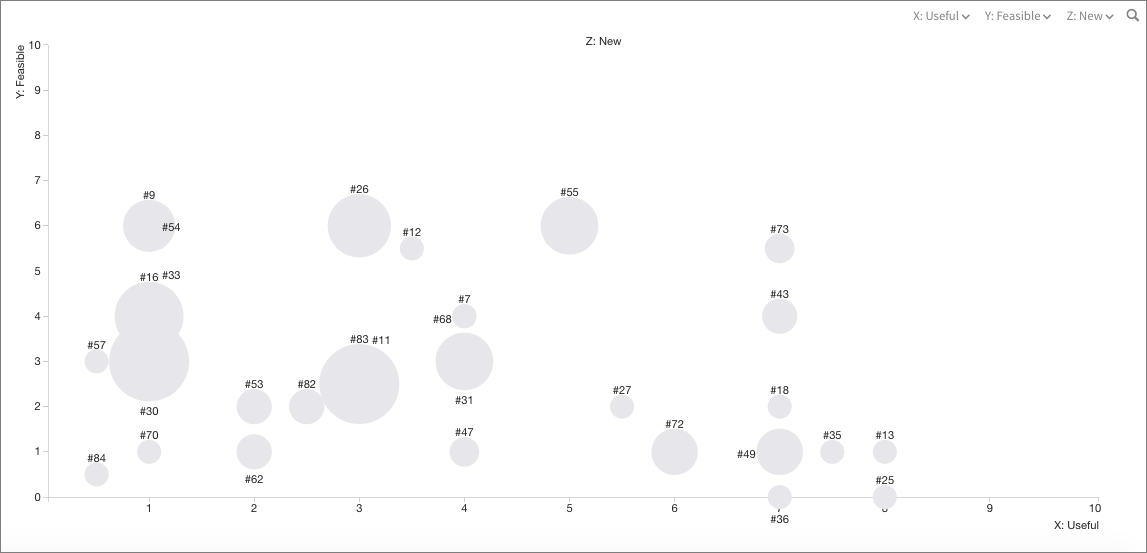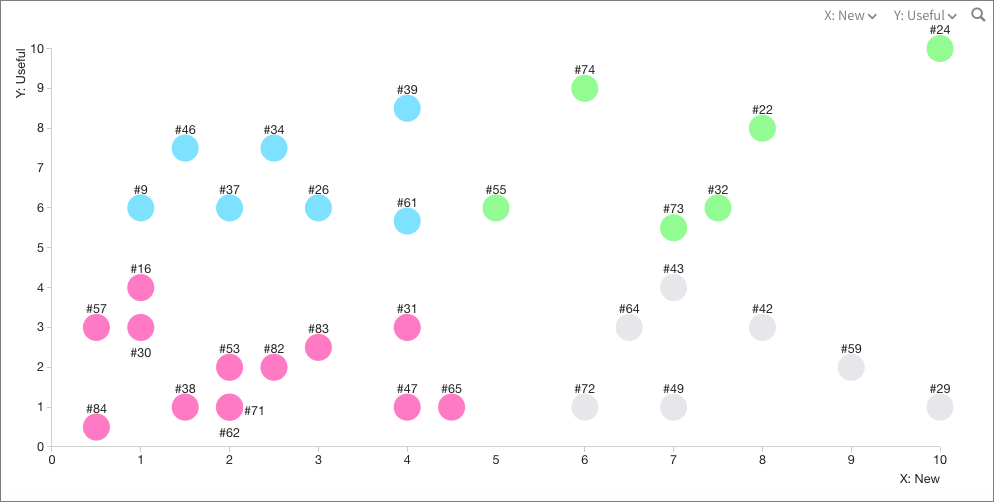The act of rating is closely linked to the idea of value: moral values that guide us in our daily lives, as well as measurable and quantifiable values we use to evaluate actions, evaluate concepts or formulate an opinion on processes. A rating comprises three distinctive aspects.
- Ratings criteria: Before formulating hasty and precocious judgments, it is critical you identify one or several criteria on which your evaluation will be based. The extent to which these criteria will be objective or measurable will depend on your specific needs and requirements.
- Items selection: A rating is based on a variety of components in order to differentiate them following different criteria and sort them out in distinctive groups. You may decide to define these elements in advance or they may also be discussed during an ideation session.
- Decision-making: Decision-making is the logical outcome of any rating. Should this student flunk this class? Must we invest in this project? At what price should this item be sold? This decision may be defined before starting your evaluation or may be subject to group discussion depending on the results.
Ratings with Stormz
In this article, we will present three different kinds of assessments to conduct with Stormz in order for you to obtain valuable information and detailed results. After defining, in a collaborative way if you wish, the suggestions to submit to the participants, you must go through three steps: the configuration, the rating and the results.
- Configure ratings from the settings window of your workshop. You can choose as many criteria as you wish and give them a name and a measuring scale.
- Rate cards, so all your participants can share their input . You can either choose to show the results as they unfold or decide to hide them until everyone has submitted their answer.
- Visualize the results of the evaluation, live, in the shape of a bubble diagram displayed on the participants’ work tools or on a large screen. The bubble graph takes into account three criteria with the axes X and Y and the bubble’s size. You can also have a look at each card’s individual ratings.
Three ready-to-use examples
To help you make the best use of Stormz’ criteria ratings, here are three workshops you can find in our template library. The main differences between them is the number of criterias selected and the way the results are exploited.
Go / No Go – Validate options
The Go / No Go is the cornerstone of any decision-making in the corporate world. Based on several measurable criterias, this workshop helps you determine whether a project should move on to the next phase or not. You will be able to choose as many criteria as you wish while still getting a very clear understanding of the workshop’s outcome thanks to the card by card ratings results. Try out this workshop on Stormz!
New, Useful, Feasible - Evaluate ideas, prototypes or strategies
The NUF is a widely used decision-making method which enables you to rate several options (ideas, prototypes, market segments) according to three criteria: is it New? Useful? Feasible? The results will come in the shape of a 3-parameter bubble graph. Try out this workshop on Stormz!
2x2 Matrix – Categorize your ideas
Many canvases, such as SWOT, COCD box or BCG matrix are based on the 2x2 matrix. Each one of them relies on 2 axes to form 4 separate compartments differentiating the elements in a very clear and distinctive way. In this workshop, your participants will assess your items according to two significant criteria. The bubble graph will enable you to sort the elements in four different groups with associated actions. Try out this workshop on Stormz! Ratings will not always enable you to determine unequivocally the best idea in the lot. Don’t forget that the results of an assessment come in the form of an average mark. It won’t be able to show how many people have expressed interest in that particular idea. If you’d rather obtain a linear rating, we kindly invite you to use the vote !
Ratings will not always enable you to determine unequivocally the best idea in the lot. Don’t forget that the results of an assessment come in the form of an average mark. It won’t be able to show how many people have expressed interest in that particular idea. If you’d rather obtain a linear rating, we kindly invite you to use the vote !
